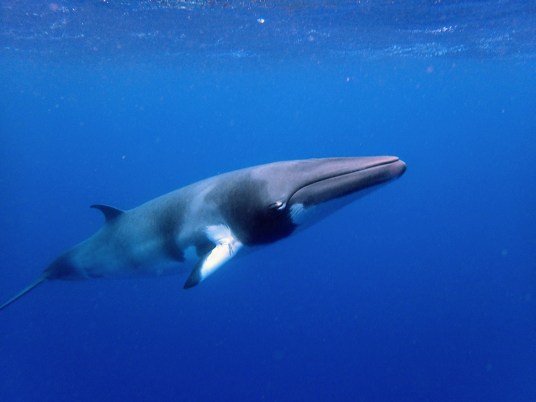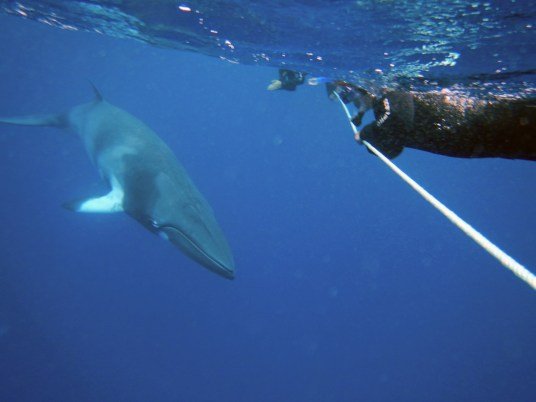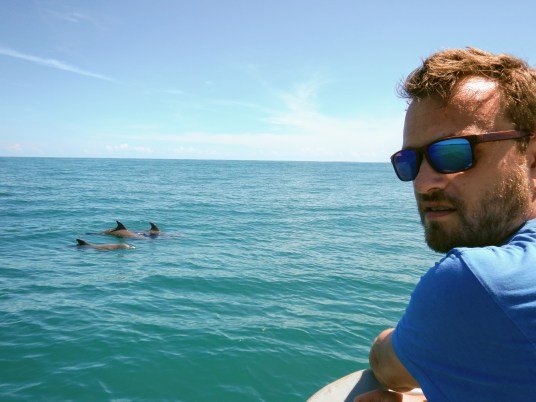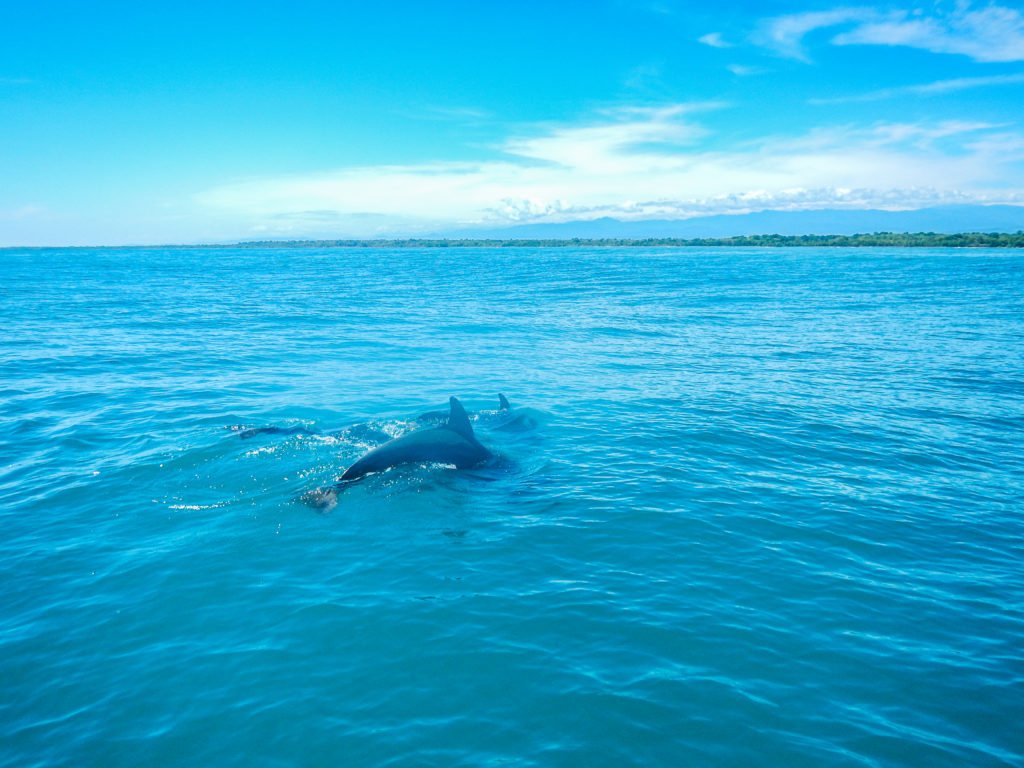Ethical Animal Tourism: Our Favorite Wildlife Encounters Around the World
We’re massive animal lovers. So whenever we travel to a new part of the world, encounters with the local wildlife are high on our to-do list. But we always do our research to make certain we only participate in ethical animal tourism.
Nothing stamps a negative memory onto a place like an exploitative animal experience. From riding elephants to posing for selfies with tigers, tour companies are eager to capitalize on their resident critters at horrific cost to the animals themselves. Having succumbed to temptation and swum with captive dolphins once, we can promise you: It absolutely isn’t worth it.
As proponents of ethical travel, we believe strongly that abusing local wildlife in pursuit of a “cool” experience or an Instagrammable photo opp is one of the ugliest sides of tourism. (Why would you want the same posed photo of yourself petting a sedated tiger that literally millions of other people have, anyway?). Fortunately, there are plenty of ways to get up close and personal with some of the world’s cutest and most awe-inspiring creatures, without causing them any harm. In fact, truly ethical animal tourism contributes to the conservation and well-being of the animals themselves.
Here are five of our favorite examples of ethical animal tourism:
1. Elephant Orphanage in Kenya
If you love elephants (and I kind of believe that anyone who doesn’t is a monster), put the David Sheldrick Wildlife Trust on your list.
Each of the baby elephants in Sheldrick’s Elephant Nursery are orphans. Left to fend for themselves due to poaching, loss of habitat, and other pressures from humans, they have been rescued from all over Kenya by DSWT and brought to Nairobi to be lovingly cared for and rehabilitated. So far, committed DSWT keepers have hand-raised over 150 orphaned elephants and re-integrated them into wild herds. Former Sheldrick orphans have even started their own healthy wild-born families!
The elephant orphanage is open for visitors just one hour each day, during the orphans’ midday feeding and mud bath. Our whole crowd squealed as a dozen baby elephants scampered after their keepers toward the open viewing area where we waited behind a rope. The calves snatched ridiculously over-sized bottles of milk out of their keepers’ hands, wrapping their thick little trunks around them to gulp down lunch. Once satisfied, they gleefully rolled around in the mud as the keepers splashed them with water – heaven, apparently, for a baby elephant!
Throughout the encounter, one of the DSWT staff filled us in on the stories of how each orphan had ended up with the Trust. From being found wandering alone and malnourished, to those rescued after being caught in snares or falling down wells, their stories will break your heart – but they have a happy ending at the Sheldrick Trust. You can even see each elephant’s history and read what shenanigans the little elephants are up to in the keepers’ diary. And if one of the babies steals your heart, you can donate to foster them.
Aside from managing the elephant orphanage, the DSWT also runs anti-poaching, de-snaring, and mobile veterinary units, complete with planes and a rapid response helicopter to come to the aid of Kenya’s threatened elephants. So, basically: Go there. It’s a super fun and extremely worthy cause to spend your tourist money on.
2. Minke Whales in Australia
Seeing the swiftly-disappearing beauty of the Great Barrier Reef was privilege enough, but we were also very lucky to be in Queensland during dwarf minke whale season. The absolute highlight of our four-day live-aboard trip with Deep Sea Divers Den was swimming with these awesome creatures.
We did our research before setting foot on the boat to make sure the whales would be respected throughout the trip, and we were pleasantly surprised by how seriously the Divers Den staff were about protecting them. Our interaction with the whales was entirely led by the whales themselves. Neither boats nor swimmers are allowed to chase them; we simply anchored in a known minke whale hotspot, and waited for them to come to us.
Although little is known about these recently-discovered whales, it’s clear that they are friendly and interested in humans. As we quietly floated on the surface, hanging on to a line attached to our dive boat, four whales repeatedly swam back and forth beneath us, often rolling to the side to peer at us with one giant eye. The encounter lasted for hours. With absolutely nothing keeping these beautiful wild animals from leaving, it felt like an incredible honor that they chose to stay and spend most of the day with us.
An added benefit was that Divers Den hosted a scientist from the Minke Whale Project to study the whales and teach us about them throughout our trip. We even got to fill out whale behavior description forms based on what we saw, send her the photos we took, and hopefully contribute to the study and conservation of our new cetacean friends!
3. Safari in Tanzania
An East African safari is on any serious traveler’s bucket list, and with good reason. Of all the countries I’ve visited and adventures I’ve had, nothing makes my heart sing like being on safari. The first time I entered the Serengeti, I was (a bit irrationally) amazed to find all the animals – which I had previously only seen in separate zoo enclosures – intermingling with one another as they wandered the endless plains. Elephants, zebras, giraffes, cheetahs, wildebeest, hyenas, lions, you name it – this was their territory and we were just visiting.
Once you’ve seen these beautiful creatures wild and free in their natural habitat, peering at them from the human side of a zoo enclosure will just leave a bad taste in your mouth. I’m still ethically torn about zoos, and I hear the arguments on both sides: their contributions to conservation are significant, but exploiting captive animals will always feel wrong. Regardless, I would much rather see African wildlife in the stunning majesty of an immense national park than pacing the tiny confines of a cage.
That said, it’s important to do your research before you book this once-in-a-lifetime experience. Not all safari operators are created equal. Make sure to let your driver/guide know that you want to respect the animals’ space, and encourage them to stay on designated roads in order to protect the parks. We’ve traveled with Arusha-based Sunny Safaris multiple times and highly recommend them!
4. Dolphins in Costa Rica
Having swum with captive dolphins in Mexico, I swore I’d never do it again. The evidence of their inhumane treatment is just too much to ignore, and the only way to stop tour companies from keeping captive dolphins is for tourists to stop paying to swim with them.
So when we spent a week in the sleepy town of Manzanillo on Costa Rica’s Caribbean coast, I had zero plans to see dolphins if it meant viewing them in captivity or aggressively chasing them down in the wild. But we kept walking by Bad Bart’s Dive Shop each day on our way to the beach. We finally stopped one morning to chat with the friendly fellow relaxing in the shade of the front porch, to ask him what this dolphin tour consisted of.
It ended up being the exact opposite of our experience in Mexico. The two of us (and no one else) joined a local fisherman on his small boat one morning and motored out through the calm turquoise waters. Because he lives and fishes nearby, our tour guide knew the areas where dolphins tend to hang out. We slowly explored the area and it wasn’t long before we began to see gray fins breaking the surface of the water nearby. Our guide then cut the motor and let us drift among the pod of dolphins, allowing them to set the terms of our interaction.
It was absolute magic. Several dolphins swam around and beneath our little boat, disappearing and then suddenly returning as though they were playing with us. A few times they even leapt out of the water right next to us, as though we were at some sort of orchestrated show – except that these dolphins were free, not following commands or performing for a reward of dead fish. When I compared it to the sinking feeling of seeing trained dolphins in captivity, they joy of seeing these exuberant creatures in the wild was overwhelming. Just like with the whales in Australia, I felt honored that the dolphins were freely choosing to give us an experience that so many humans have selfishly demanded from them by force. Aaron snapped a picture of me on the boat ride home from this experience, looking like the textbook definition of glee.
5. Animal Rescue Center in Costa Rica
Any animal lover heading to Costa Rica has one thing on their minds: Sloths!
Of course we were no different, but we’d heard that handling these lackadaisical creatures for posed photo shoots stresses them out and raises their heart rates to unsafe levels. We’d also heard horror stories about visitors harassing these already-endangered sloths in the wild, all in pursuit of a share-able photo. We wanted no part of that.
Fortunately, the Jaguar Rescue Center Foundation was there to set the bar for animal sanctuaries. The center provides a home for ill, injured, and orphaned animals – a temporary home if they can be re-released into the wild, and a permanent one if not. We signed up for the two-hour private tour and it was worth every penny of the $60 charge.
A staff member walked us through the whole center, telling us the histories of every animal we met. From sloths that had been electrocuted on unsafe power lines, to crocodiles saved from hunters, to illegally-owned ocelots, she knew each one’s story. Although many ill or dangerous creatures were in enclosures to ensure their safety or ours, many friendly inhabitants wandered freely through the center. During our tour we were approached by a sweet little deer who just wanted a pet, a curious toucan who tried to steal Aaron’s phone, and a stoic pelican who I initially mistook for a statue.
We were also lucky enough to help feed the baby spider monkeys. As they clambered all over us, spilled milk everywhere, and wrestled with each other, we got a very real idea of what it would be like to have septuplets who could climb. Unsurprisingly, hanging out with the sloths was much more relaxing! We gladly refrained from touching them, but got up close to them inside their enclosure as they napped languidly in the crook of a tree trunk.
(By the way, we seem to have only scratched the surface of Costa Rica’s wonderful, humane animal experiences. Have you seen the videos of this gigantic sanctuary for rescued dogs?! We were incredibly sad to miss it on our last trip).
Now that we’ve experienced the unbridled joy and uniqueness of these cruelty-free animal encounters, we’ll never go back to exploitative tourist traps. I love knowing that my money is encouraging ethical animal tourism practices and supporting essential conservation efforts!
If you’re just starting out on your journey to understanding the issues surrounding the tourist industry’s treatment of animals, check out The Travel Rebellion and Green Global Travel for plenty more background and inspiration for your future adventures.
And for those of you who are seasoned animal-loving travelers: Where should we go next? Leave us a comment about your favorite ethical animal encounters, because odds are we super want to check them out ourselves!
You Might Also Like:
This post contains affiliate links. If you make a purchase through our links, we get a small commission at no cost to you. This helps with the cost of keeping this site running – so thank you in advance for clicking through! Don’t worry, we won’t recommend anything we don’t fully believe in.



















